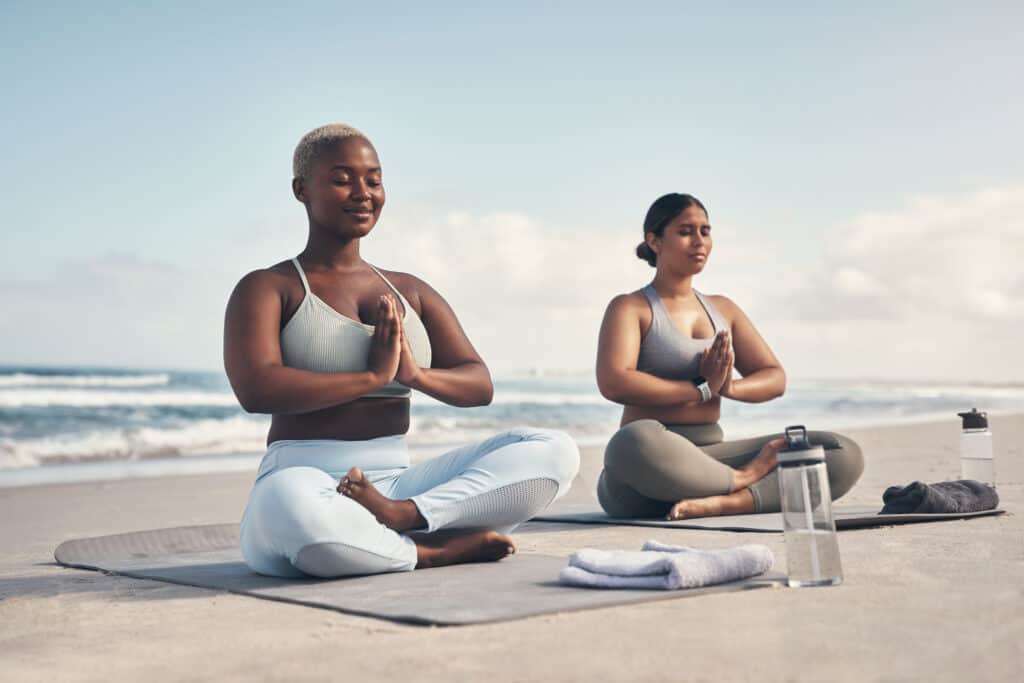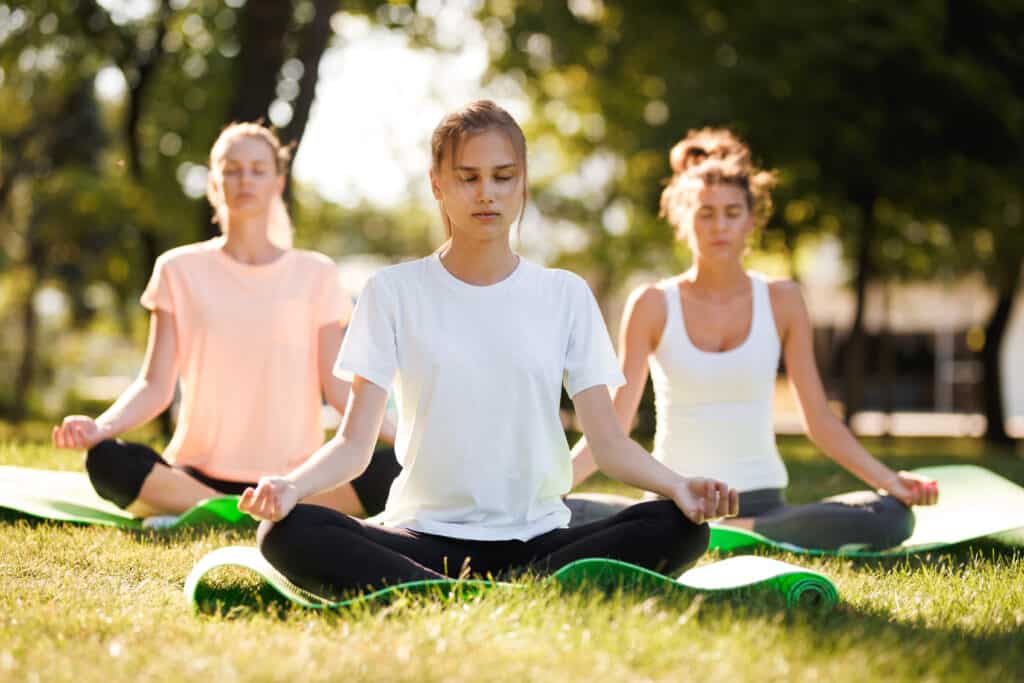The 4-7-8 Breathing Technique, a yogic practice with the potential to reduce stress and promote well-being, has become increasingly popular in recent years. Controlled breathing has the potential to generate powerful physical and mental health benefits, which can be accessed by mastering this ancient yogic practice.
In this blog post, we will delve into the science behind controlled breathing and explore how it influences our physiological processes such as the oxygenation of organs and tissues. We will also provide step-by-step instructions on how to practice the 4-7-8 Breathing Technique effectively with proper posture and tips for maintaining focus throughout each phase of the exercise.
Furthermore, we will discuss the benefits of regularly practicing 4-7-8 breathing in combating stress-related sleep issues and supporting mental health. Additionally, we will introduce complementary techniques like alternate nostril breathing (Nadi Shodhana) and mindfulness meditation exercises that can enhance your relaxation practices even further.
Finally, recognizing when self-help techniques are insufficient is crucial; therefore, we’ll touch upon when professional help may be necessary for persistent sleep disorders or other concerns related to your well-being.
The Science Behind 4-7-8 Breathing
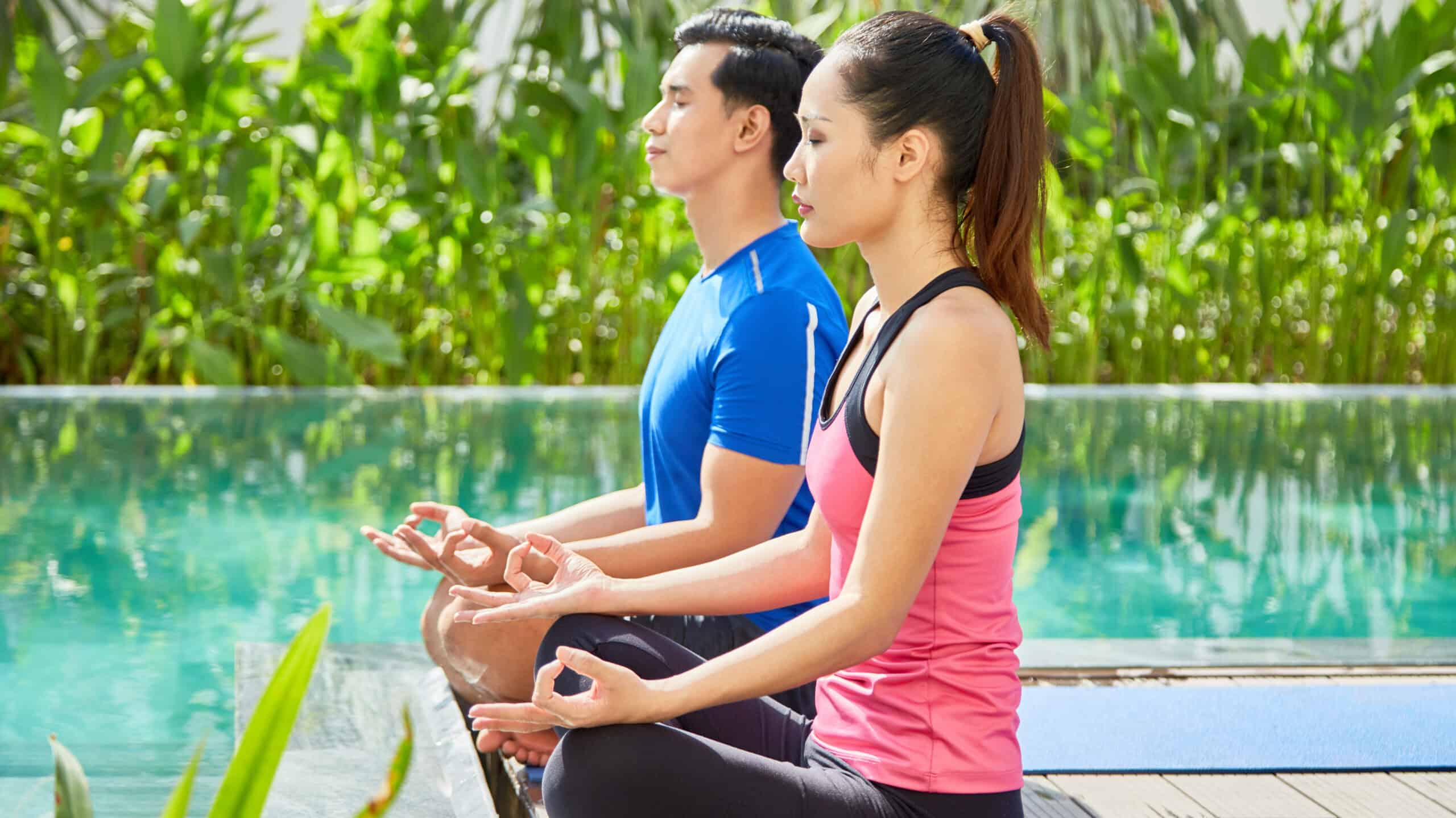
The 4-7-8 breathing technique, developed by Dr. Andrew Weil, is designed to regulate the breath and bring the body back into balance. This method helps replenish oxygen levels in your organs and tissues, leading to a state of deep relaxation. By understanding the physiological effects of controlled breathing and its benefits for oxygenation, you can harness this powerful tool for improved well-being.
Understanding the Physiological Effects of Controlled Breathing
Controlled breathing techniques like 4-7-8 have been used in various forms throughout history as part of yogic practice and other spiritual traditions. Activating the PNS, which regulates relaxation and reduces stress responses in our bodies, can be accomplished through controlled breathing techniques such as 4-7-8.
Research has shown that slow, deep breaths can counteract shallow breathing often associated with anxiety or stress by stimulating receptors located within our lungs called stretch receptors. As these receptors are activated during deep inhalations, they send signals to our brain via the vagus nerve – a key component of PNS – resulting in decreased heart rate and blood pressure while increasing feelings of calmness.
Oxygenation Benefits for Organs and Tissues
- Better circulation: Practicing 4-7-8 breathing improves overall blood flow due to increased oxygen delivery throughout your body’s cells, helping them function more efficiently.
- Mental clarity: Enhanced oxygen supply also supports cognitive functioning by providing essential nutrients required by neurons within our brains.
- Detoxification: Deep breathing helps remove waste products and toxins from our cells, promoting overall health and vitality.
Incorporating the 4-7-8 breathing technique into your daily routine can have a profound impact on both your physical and mental well-being. By understanding how this practice influences physiological processes within our bodies, you can harness its power to achieve greater balance in all aspects of life.
The science behind 4-7-8 breathing provides a valuable insight into the physiological effects of controlled breathing and its potential to improve well-being. By grasping the fundamentals of this approach, one can commence to experience its advantages.
How to Practice 4-7-8 Breathing Technique
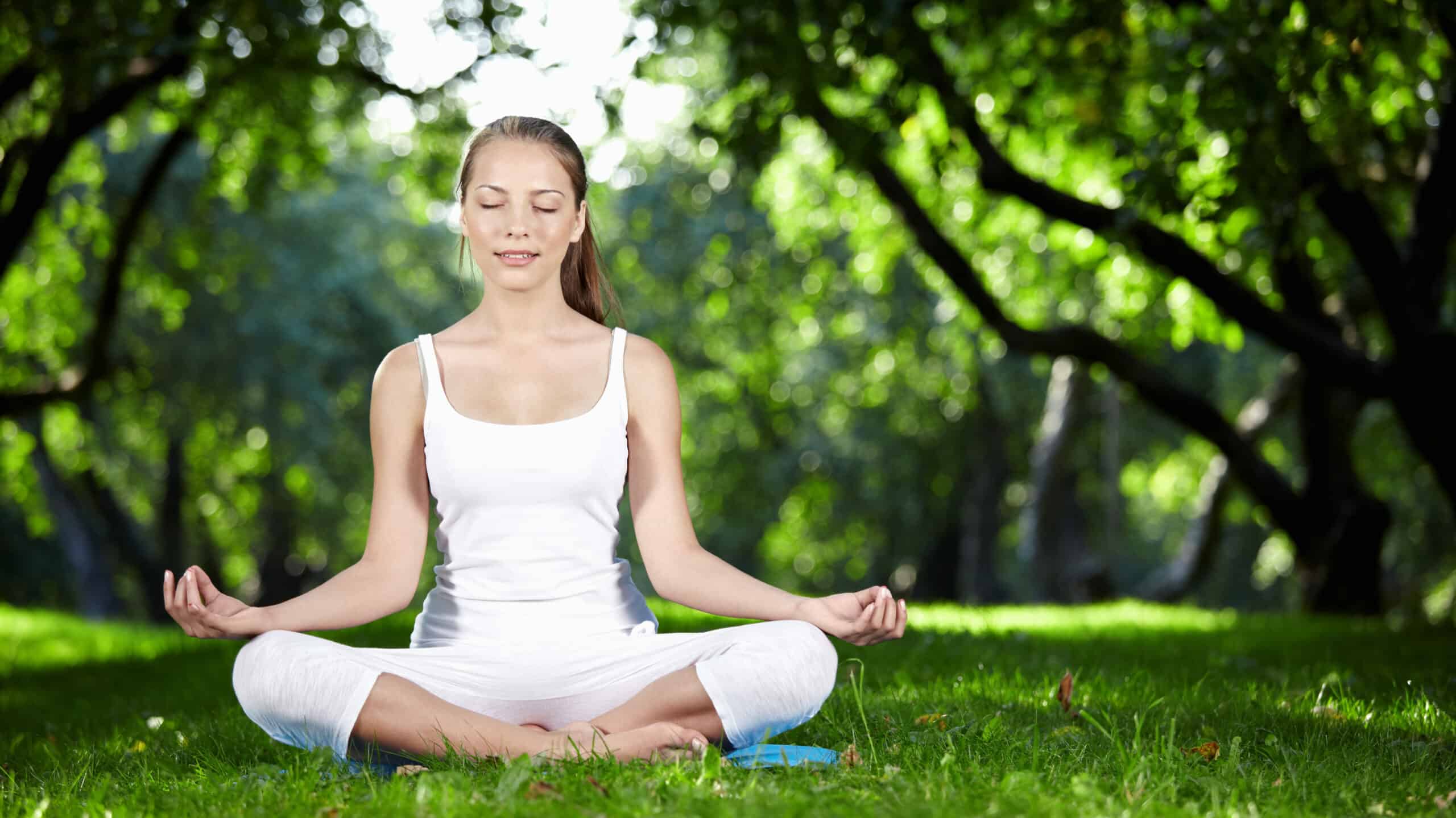
The 4-7-8 breathing technique is a simple yet effective method for promoting relaxation and reducing stress. To make the 4-7-8 breathing technique part of your daily life, try these steps.
Proper posture and positioning during practice
To begin practicing the 4-7-8 breathing technique, find a comfortable place to sit or lie down. Ensure that your back is straight and your shoulders are relaxed. Sitting in an upright position with proper alignment allows for optimal airflow, making it easier to take deep breaths.
Tips on focusing attention during each phase of the exercise
- Exhale: Start by exhaling completely through your mouth while pursing your lips, creating a whooshing sound as you release all the air from your lungs.
- Inhale: Close your mouth and inhale deeply through your nose for four seconds, allowing oxygen-rich air to fill up every corner of your lungs.
- Hold: Hold onto that breath for seven seconds; this pause helps regulate shallow breathing patterns often associated with anxiety or stress responses in the sympathetic nervous system.
- Exhale slowly: Open up those pursed lips again and exhale gently over eight seconds. This slow exhalation engages the parasympathetic nervous system responsible for inducing relaxation states within our bodies.
Focusing on each step throughout this process will help you maintain awareness of your breath regulation, ultimately leading to a more relaxed state. For maximum gain, make sure to do this breathing practice regularly – at least twice a day.
As with any relaxation practice, consistency is key when it comes to reaping the benefits of 4-7-8 breathing. For the best outcomes, make this exercise part of your regular regimen to better both your psychological and physical health.
The 4-7-8 breathing technique is an effective way to reduce stress and anxiety, improve sleep quality, and promote overall well-being. Regular use of this technique can bring a range of positive outcomes. Next, we will explore the advantages of regularly practicing 4-7-8 breathing in more detail.
Benefits of Regularly Practicing 4-7-8 Breathing

Incorporating the powerful 4-7-8 breathing technique into your daily life can have a significant impact on your overall well-being. This simple yet effective practice has been known to alleviate mild sleeplessness caused by anxiety or stress, promote relaxation, reduce negative emotions, enhance focus, and support mindfulness meditation practices.
Combating Stress-related Sleep Issues
Mild sleeplessness due to anxiety or stress is a common issue faced by many individuals. By practicing 4-7-8 breathing regularly, you can help regulate your breath and activate the parasympathetic nervous system, which promotes relaxation and reduces the effects of stress on your body. As a result, this deep breathing exercise may improve sleep quality for those experiencing occasional bouts of insomnia related to stress.
Supporting Mental Health Through Regular Practice
- Promoting Relaxation: The slow pace of 4-7-8 breathing helps shift the balance from the sympathetic (fight-or-flight) response towards parasympathetic (rest-and-digest) activation. This process induces a sense of calmness that can be beneficial in managing everyday stresses.
- Reducing Negative Emotions: Focusing on regulating one’s breath during this exercise allows for better control over emotional responses such as anger or frustration. Regular engagement in this practice can make it simpler to keep a level head when faced with trying circumstances.
- Fostering Focus: The act of concentrating on each phase of inhaling and exhaling during 4-7-8 breathing can help improve mental clarity and focus. This increased attentiveness may lead to enhanced productivity and a more mindful approach to daily tasks.
- Supporting Mindfulness Meditation: As an integral part of many yogic practices, breath regulation is essential for developing mindfulness skills. By applying the 4-7-8 technique to your meditation routine, you can further improve both physical and mental well-being through an enhanced presence at the moment and improved heart rate variability.
In addition to these benefits, practicing 4-7-8 breathing consistently has been linked with improved heart rate variability, which is associated with better cardiovascular health and stress resilience. By spending only a few moments daily on this straightforward practice, you can observe remarkable enhancements in both physical and mental health.
Regularly practicing 4-7-8 breathing can be a powerful tool to help manage stress and improve mental health. With the addition of complementary techniques, such as alternate nostril breathing (Nadi Shodhana) and mindfulness meditation exercises, relaxation levels can be further enhanced.
Complementary Techniques for Enhanced Relaxation
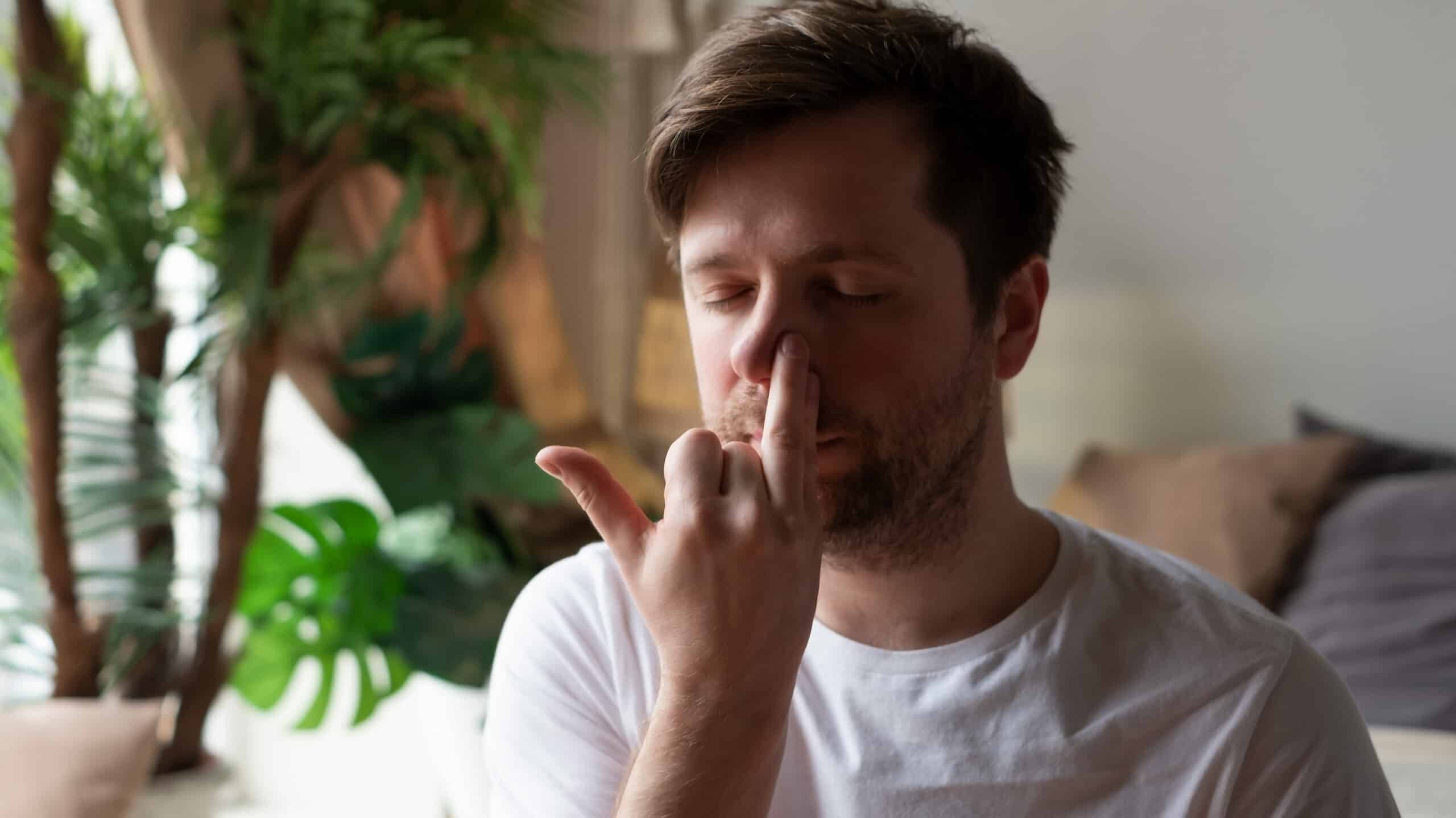
In addition to practicing 4-7-8 breathing regularly, you can explore other techniques such as alternate nostril breathing (Nadi Shodhana) or mindfulness meditation that aid in overcoming distractions while slipping into deeper states of relaxation. These practices complement the benefits of 4-7-8 breathing and contribute to a more holistic approach towards improving your overall well-being.
Alternate Nostril Breathing (Nadi Shodhana)
This ancient yogic practice involves alternating breaths between your nostrils, which helps balance the sympathetic and parasympathetic nervous systems. By doing so, it promotes relaxation and reduces stress levels. To practice Nadi Shodhana:
- Sit comfortably with your back straight.
- Block off the right nostril and inhale softly through the left one, pausing for a second before closing it with your ring finger and exhaling slowly out of the open right side.
- Pause briefly before closing the left nostril with your ring finger, releasing the right nostril, and exhaling slowly through it.
- Inhale through the right nostril before switching sides again to exhale through the left one.
You can repeat this cycle for several minutes until you feel calm and relaxed. For best results, incorporate alternate nostril breathing into daily routines alongside practicing 4-7-8 breathing technique.
Mindfulness Meditation Exercises
Combining alternate nostril breathing and the 4-7-8 technique with mindfulness meditation can further enhance relaxation and mental clarity. By attending to the current instant, mindfulness meditation encourages one to become more cognizant of their musings, sentiments, and physical feelings without criticism or response.
Here are some simple steps to practice mindfulness meditation:
- Find a quiet space where you can sit comfortably with your back straight.
- Close your eyes and take a few deep breaths using the 4-7-8 breathing technique or any other slow-breathing method that works for you.
- Become aware of the sensation of each breath as it enters and leaves your body. If distractions arise, gently bring your focus back to your breath without judging yourself for getting distracted.
You can start by practicing mindfulness meditation for just five minutes per day before gradually increasing the duration over time. Combining this practice with regular 4-7-8 breathing exercises will help enhance overall relaxation while supporting emotional well-being in daily life.
Complementary techniques for enhanced relaxation, such as alternate nostril breathing and mindfulness meditation exercises, can help to improve well-being. If self-care techniques are not enough to promote better sleep, it may be time to consult a doctor.
When Professional Help Is Necessary

While practicing 4-7-8 breathing and other relaxation techniques can be beneficial for many individuals, it’s important to recognize that the effectiveness of any self-help intervention depends upon individual circumstances. If insomnia is recurrent or causing serious distress, it’s critical to seek medical advice for an accurate diagnosis and treatment.
Recognizing when self-help techniques are insufficient
If you find that your sleep issues persist despite the regular practice of 4-7-8 breathing and other relaxation methods, consider seeking professional help. Some signs that may indicate the need for medical advice include:
- Persistent difficulty falling asleep or staying asleep
- Frequent waking up during the night without being able to fall back asleep easily
- Experiencing excessive daytime sleepiness despite getting adequate hours of sleep at night
- Nightmares or night sweats disrupting your restorative sleep cycle
Seeking medical advice for persistent sleep disorders
Contacting a healthcare provider is crucial if you’re experiencing ongoing challenges with your sleeping patterns. A doctor may evaluate diverse elements that could be leading to your difficulties, such as everyday customs, possible medical conditions like depression or stress, and medication effects. They may recommend treatments ranging from cognitive-behavioral therapy (CBT) specifically designed for insomnia (CBT-I), to prescription medications like sedatives or antidepressants depending on the cause of your disorder.
In addition to consulting with a primary care physician about these concerns, exploring specialized resources such as certified sleep clinics can provide further guidance and support. These facilities offer comprehensive evaluations, diagnostic testing (e.g., sleep studies), and personalized treatment plans to address your unique needs.
Remember that seeking professional help is a crucial step in improving your overall well-being when self-help techniques are not sufficient. By addressing the root causes of sleep disturbances with the assistance of healthcare providers, you can work towards achieving better restorative sleep and enhanced quality of life.
Conclusion
In general, utilizing the 4-7-8 breathing practice can make a noteworthy effect on both physical and psychological wellness. By regulating our breath and stimulating the parasympathetic nervous system, we can reduce stress levels, support sleep quality, and promote general well-being.
Complementary techniques such as alternate nostril breathing and mindfulness meditation exercises can further enhance relaxation benefits. However, it’s important to recognize when professional help may be necessary for persistent sleep disorders or other underlying medical conditions.







